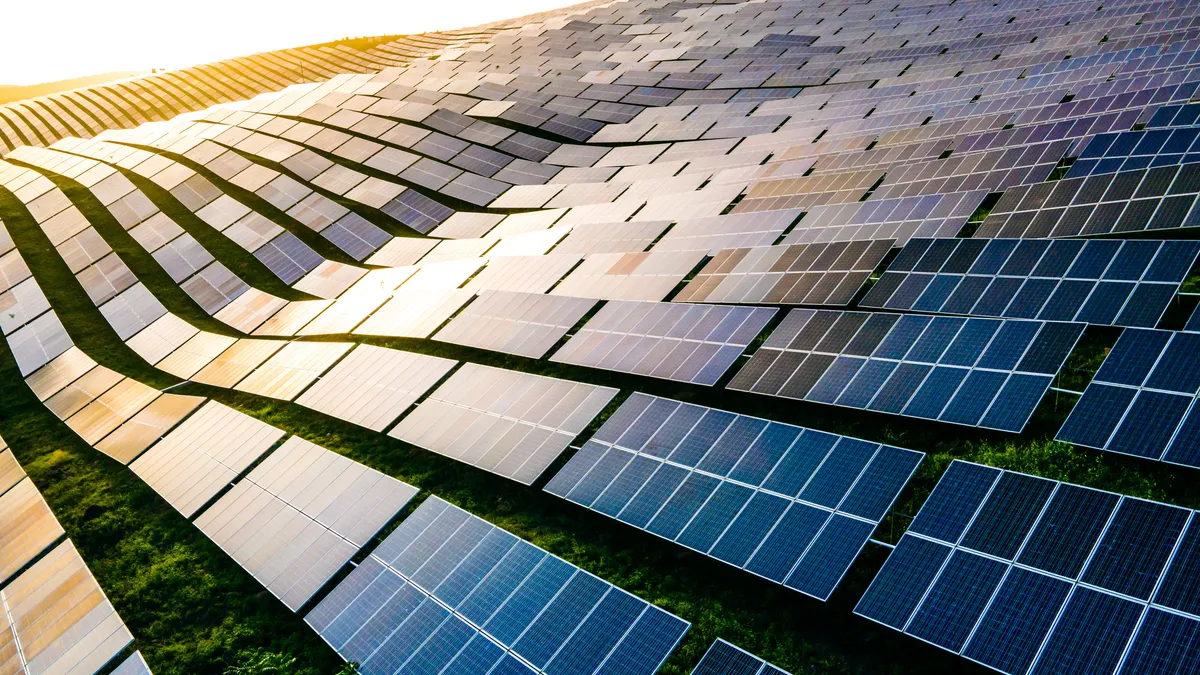Dive Brief:
-
Venture capitalists invested $7 billion in solar companies and projects in 2022, more than 50% greater than the $4.5 billion in solar-bound venture capital in 2021, according to a report by Mercom Capital Group.
-
Mergers and acquisitions were the most numerous in 2022 in a dozen years, but other forms of corporate finance, including debt financing and public market financing, posted slight declines.
-
Soaring interest in solar technologies could drive investment to even greater heights in 2023, but rising interest rates could temper financier’s enthusiasm, according to Raj Prabhu, CEO of Mercom Capital Group.
Dive Insight:
To say that 2022 was a record year for investor interest in solar energy might actually be an understatement, Prabhu said. “If we go all the way back to 2010, we never had a year over $2 billion until” 2021, he said. “That’s pretty significant.”
Solar companies are also merging and being acquired at record rates, with 128 transactions in 2022. Eight exceeded $1 billion each.
Overall corporate financing declined 13% this past year, likely due to rising interest rates cutting into the total value of financing deals in spite of an increase in total transactions. But Prabhu sees the potential for a virtuous cycle in other developments.
Investors have shied away from the solar industry since the late 2000s, when China’s growing dominance in the industry pushed numerous American companies out of business and cost investors millions of dollars. But growing calls for an energy transition and the Inflation Reduction Act have spurred new interest in the solar sector, and the growing number of solar mergers and acquisitions gives investors a growing confidence in profitable exit strategies.
Venture capital, perhaps famously, usually chases disruptive technologies where investment can reap exponential profits. And there is, after several quiet years, a good amount of money going into new solar technologies—companies developing thin-film solar technologies, that could be more flexible than conventional PV solar, raised $76 million in 2022, according to Mercom.
Yet most of the new VC dollars going into solar appear to be chasing pro-solar policies that have accelerated since the onset of Covid-19, according to Prabhu. Solar seems set to grow as world leaders promise to fund an energy transition at almost any cost,. But with few solar stocks available for public trading, venture capital is one of the few avenues for investors to play the entire solar field.
It’s also telling, Prabhu said, where exactly investors have put their funds. Downstream technologies and companies—mainly solar developers and installers—have attracted the bulk of the attention. Manufacturers and other upstream opportunities have not garnered the same interest, in spite of the hype raised by the IRA.
Prabhu cited a few factors: Manufacturing is less appealing to venture capitalists in general because of the large upfront cost and long payback time. Questions persist about how various provisions of the IRA will work and the uncertainty could be putting investors off for now.
And there’s also the reality of which companies have the capacity to build out manufacturing in the first place. It won’t be new startups, Prabhu said. Established firms such as First Solar will dominate the field, and such companies may not need to ask for funds from outsider investors.
Even so, Prabhu said he believes the IRA and other policy developments will likely drive increased solar investment in 2023—with one caveat.
“Another thing we are hearing is because of inflation and [rising interest rates], borrowing becomes tougher and more expensive,” he said. “If there is any slow down, higher interest rates would be one of the major reasons. Otherwise fundamentally solar should grow. The policy is behind it, the market is ready to go, and nothing is stopping solar right now except for these financial conditions.”













